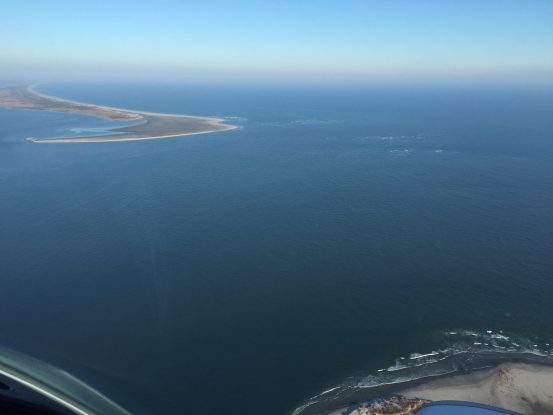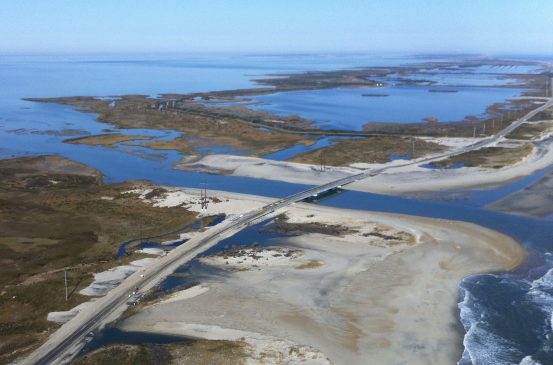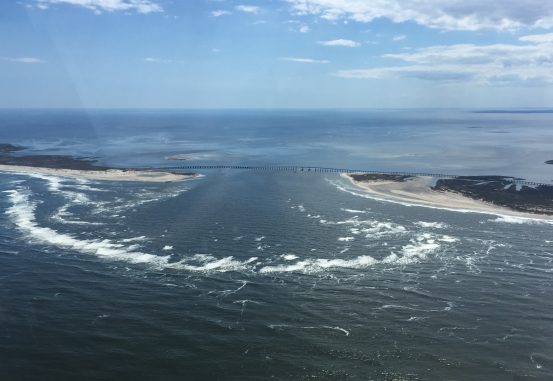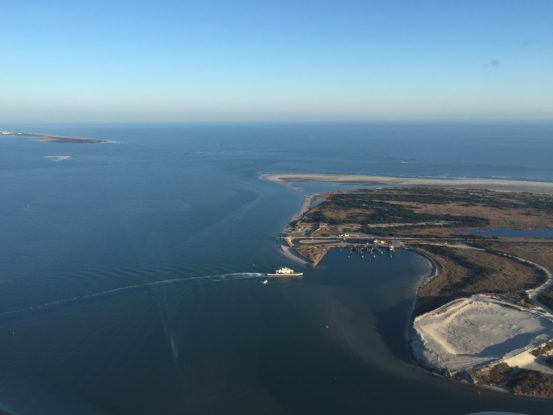Oregon and Hatteras Inlets and the Hurricane of 1846
Sometime around 1825, the New Currituck Inlet closed for the last time, creating a rare—perhaps unheard of situation on the Outer Banks. From the Virginia border to the Village of Ocracoke, the Outer Banks presented a continuous ribbon of sand bordered by the Atlantic Ocean.
Roanoke Inlet—the passage the ships of the Lost Colony had used, had silted over 15 years earlier. New Inlet, on what is now Hatteras Island, shallow and intermittently open, had also been closed for some time. Ocracoke was not yet an island, and Ocracoke Inlet (between Ocracoke Village and Portsmouth Village on Portsmouth Island) had become an important transshipment point because it was the only passage to the Inner Banks and the interior ports of northeastern North Carolina.

The first inkling that things might change occurred on September 7. The brig USS Washington was making for Hampton Roads after a scientific survey of the Gulf Stream. In his report of the cruise, Lieutenant Stembel wrote, ”After a pleasant cruise about a month in the Gulf Stream, where she had been employed surveying, the U.S. Brig Washington … stood in…for the Capes of Virginia. As the weather appeared threatening, the wind fresh and blowing on shore, great anxiety was felt to reach an anchorage.”
The ship never made it to the Capes of Virginia.
“Sea and current (forced the vessel) upon Cape Hatteras … the gale, now increased in volume, howled ominously through the rigging, and already our little vessel swaggered under her canvas; the sky was obscured by flying masses of dark clouds; the crests of the waves heaving their dark volumes to the sky, flashed with the ghostly phosphorescent light often observed in storms … the barometer fell rapidly, and everything foretold a terrible strife of the elements,” the Lieutenant wrote.

The ship survived—barely, and the cost was high. “The brig layover completely on her side; the water boiling over the lee rail. For hours the crew held to the rigging, but around noon a heavy sea broke on board …washing overboard nearly every soul.”
Washed overboard was Captain George M. Bache and ten crew members. As a footnote to history— Captain George M. Bache was the great grandson of Benjamin Franklin.
Farther South, at Ocracoke Inlet, the storm pushed the sea into the streets of Portsmouth and Ocracoke Villages. A letter from Sarah Clark, who was vacationing there at the time, to her husband in Pasquotank County describes a night of terror.
“You could hear the water slopping against the floor; you cannot imagine how bad it did sound.”
She describes shipwrecks…”There are 10 to 12 ashore around here and I have not heard how many on Ocracoke.”
One hundred twenty miles north, the sea breached the Currituck Banks and ocean waves were breaking upon the banks of Knotts Island. At Bodie Island, Coast Survey Assistant C. O. Boutelle was on hand to witness the storm’s fury, writing:
“On the morning of the September gale the sound waters were all piled up to the southwest from the effects of the heavy northeast blow of the previous days. The weather was clear … until about 11 a. m., when a sudden squall came from the southwest, and the waters came upon the beach with such fury that Mr. Midgett, within three quarters of a mile from his house when the storm began, was unable to reach it… He sat upon his horse, on a small sand knoll, for five hours, and witnessed the destruction of his property, and (as he then supposed) of his family also, without the power to move a foot to their rescue, and, for two hours, expecting to be swept to sea himself.”
His family did survive, as did Mr. Midgett.
Midgett, however, may have witnessed the creation of a new highway to the sea. The land he owned is where Bodie Island Lighthouse is located, and it was the September Hurricane of 1846 that created Oregon Inlet. Certainly Boutelle knew what he was seeing.

“When the winds shifted from northeast to southwest, the force of water coming in so suddenly (it)… broke through … the sea beach … and created the inlets. They were insignificant at first, not more than 20 feet wide, and the northern one much the deepest and widest,” he wrote.
The shallow draft side-wheeler Oregon was the first ship to pass through the new waterway, giving the new inlet its name.

Hatteras Inlet also opened at that time, its opening terrifying with a witness writing, “they saw the sea and sound connected together and the live oaks washing up by the roots and tumbling into the ocean.”
Neither inlet was immediately navigable, although Hatteras Inlet became a viable route within 20 years. It took longer for Oregon Inlet, but by the turn of the 20th century, it was the main entrance to the waters of the Outer Banks Sounds.
